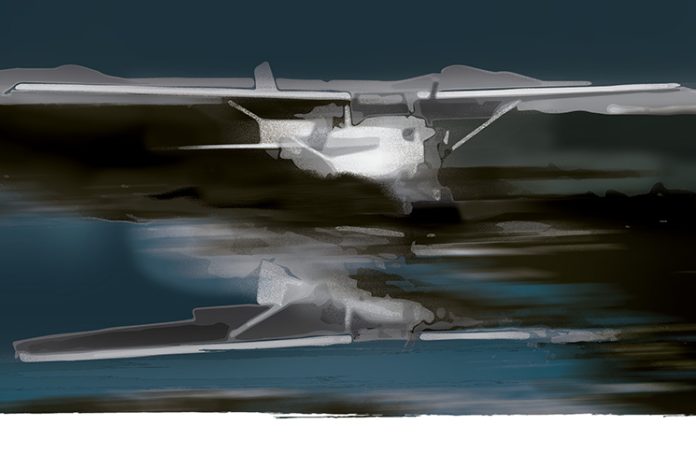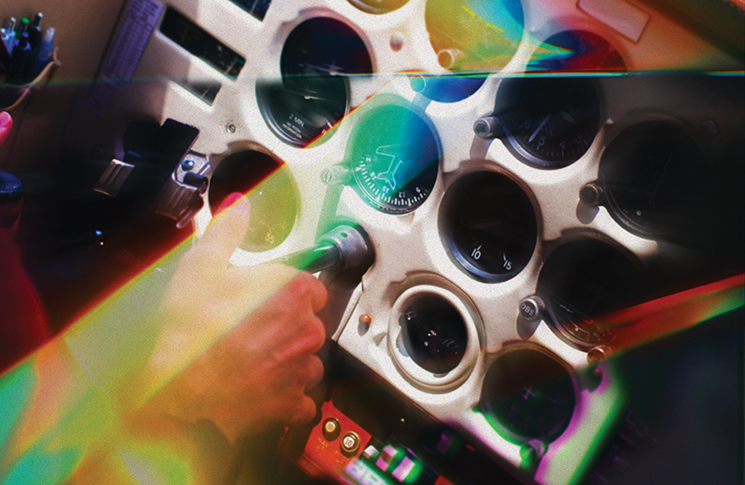A quick glance suggested everything would be okay – this was an expectations-driven illusion.
It was a beautiful winter’s day in western Queensland, warm and dry, for my trip to Bundaberg. Two hours after take-off and tracking east with a recently acquired tailwind, I ran into a long line of heavy showers, several hours and further west than forecast, but I admit I had become complacent and hadn’t studied the forecast carefully.
Emerald to the north-east was blocked. I tried the nearest cattle station strip on my EFB software. It was 15 nm south but had trees growing on it and looked a little swampy. Alpha was clear but was 60 nm back. I’d landed at a nearby cattle station 2 years previously so, with showers closing in, I headed that way.
I had enough fuel to reach Charleville, 130 nm further south and then regain track and, if I waited a couple of hours as I’d done before, the showers would pass. From the air, the familiar station strip had a new windsock and I recalled the manager telling me he was going to do the dirt strip up for the RFDS. I assumed he had because it looked like asphalt.
I joined downwind and landed but after 150 metres, the aircraft slewed sideways and stopped. That was when I realised the famous black soil plains had had some of that rain and the normally grey surface had taken on the appearance of bitumen.
There was no white cross on the strip, of course. It was uncertified and the woman who came out in the buggy told me it had rained steadily all night. They hadn’t been expecting it and she hoped I wasn’t going to land. The EFB had told me it was a ‘dry weather strip’. I’d forgotten what an all-weather strip meant since the drought began, but I hadn’t carried out a precautionary search and landing. If the wheels had dug in, there could have been a prop strike, or worse, the aircraft may have flipped.
“I had become complacent.
A couple of workers towed me back to the threshold where I spent an hour on my knees in the clinging black soil, patiently gouging most of it out of the wheel spats, noticing that the slightly inclined edge of the runway was drier than the middle. I was invited to stay in the ringer’s quarters for the night. Fortunately, I’d thrown a single doona in with my swag.
‘You’ll need it,’ the woman said.
I apologised for assuming the strip was serviceable and for the wheel ruts I’d left in the soft mud.
‘Assumption is the mother of disaster,’ she said.
Over breakfast, I discovered I was the only one who had heard the light shower in the early hours. The workers went off to their various duties, leaving me to study the online form on soft-field take-offs. Most pilots know there will be an increased take-off distance with wet grass, but clinging black soil is something else. It has been the same since the early days of flying outback.
I blew the dust off the pilot’s operating handbook (POH). By this stage, a 400 kg+ bullock had walked down the top edge where I planned to take-off and I spent another 2 hours plugging hoofmarks with clods on the 1,000-m strip, elevation 1,100 ft. At least the morning sun had dried the surface and black mud no longer clung to my shoes.
I studied speeds and distances, trying to compute the trees at the end of the strip with the surface conditions, as the wind came up and rain clouds moved in. The POH gave a second stage of flap and 55 kts as soft-field take-off minima, which was not something I practised in my 420 hours as a private pilot.
“Assumption is the mother of disaster.
The surface was doughy as we pushed the aircraft into position for the narrow, top-edge runway. I had chosen the windsock as my point of aborting the take-off. The surface was softer further down where there was a small dip and then an incline towards the trees. I elected a short-field take-off, with full power, and released the brakes.
I had one stage of flap on the floor lever so that I could engage the second without taking my eyes off the runway, but dropped all flap as the windsock came up with 45–50 knots IAS. I just wasn’t getting the speed and was running out of runway.
With the yoke back, the aircraft lifted off around 57 kts, but a wing caught the crosswind and the nose was too high. Back in ground affect, I passed 60 kts and lifted the nose, quickly reaching best angle of climb.
I didn’t see the trees, which may have been the case with a shallower
climb-out.
Lessons learnt
In hindsight, the wiser course of action would have been to complete a precautionary search and landing and then consider my options.
Have you had a close call?
8 in 10 pilots say they learn best from other pilots and your narrow escape can be a valuable lesson.
We invite you to share your experience to help us improve aviation safety, whatever your role. You may be eligible for a free gift just for submitting your story.
Find out more and share your close call here.
Disclaimer
Close calls are contributed by readers like you. They are someone’s account of a real-life experience. We publish close calls so others can learn positive lessons from their stories, and to stimulate discussion. We do our best to verify the information but cannot guarantee it is free of mistakes or errors.





